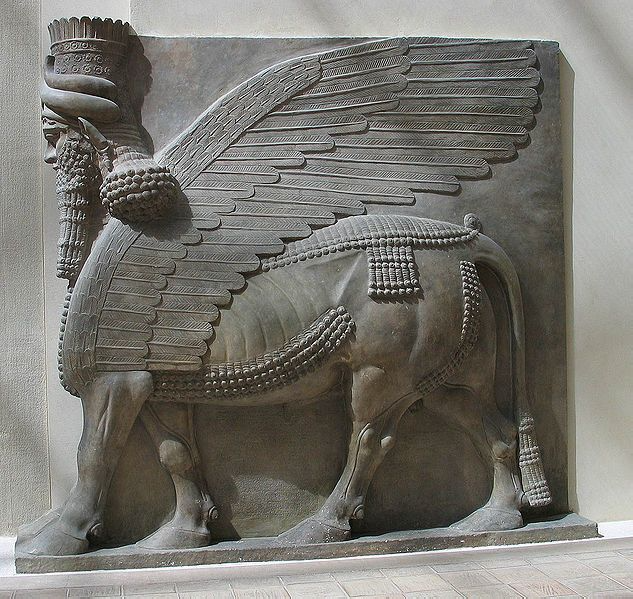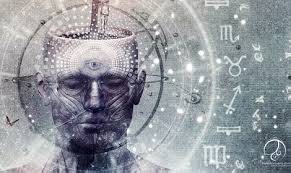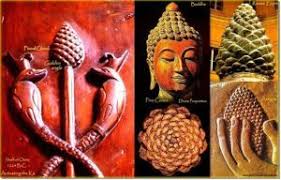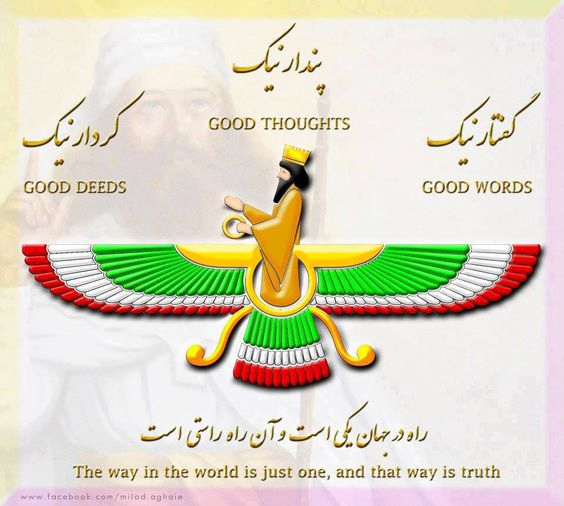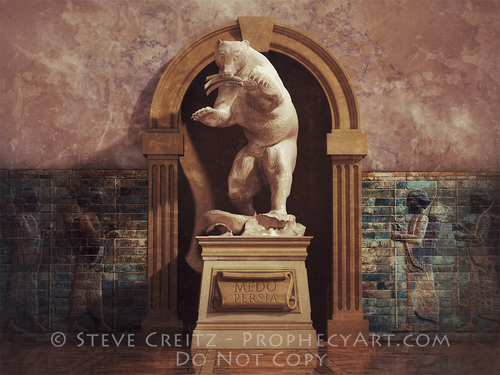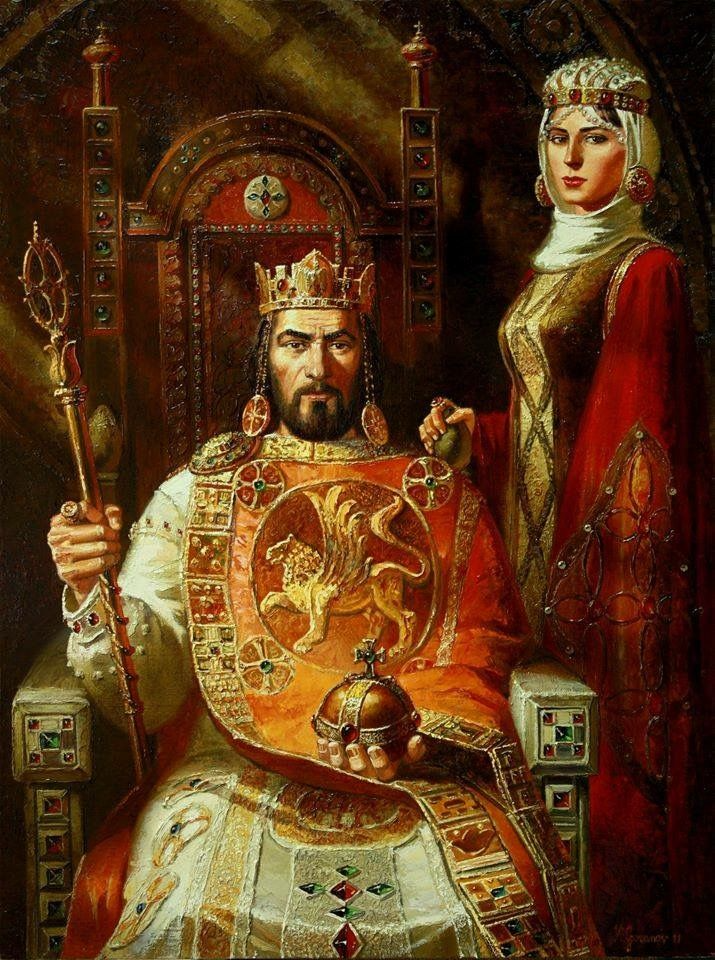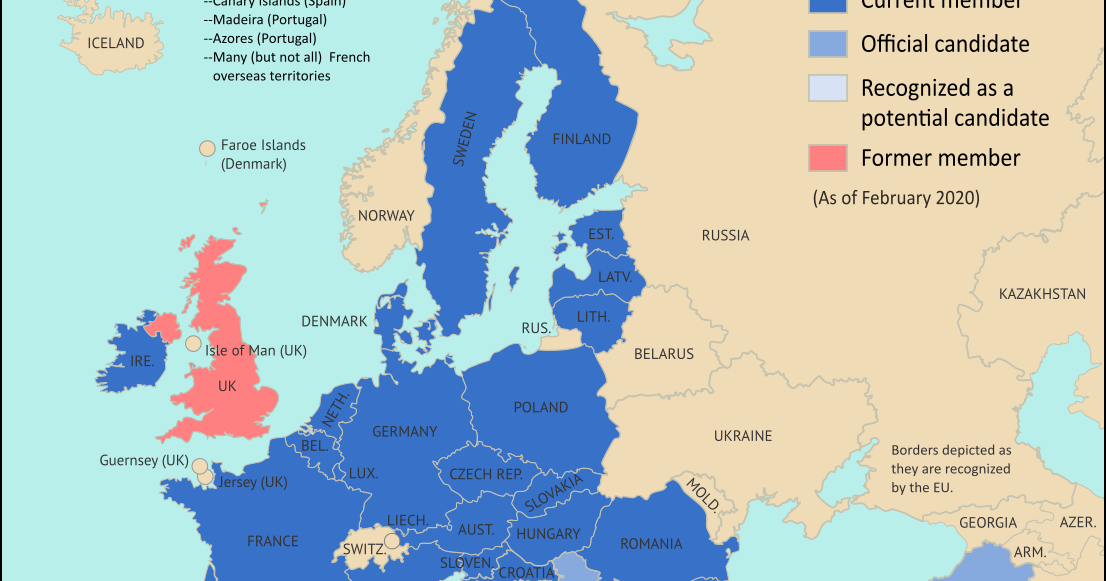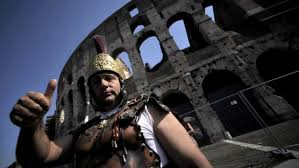FOUR WORLD POWERS' MANTLE AND THE THRONE
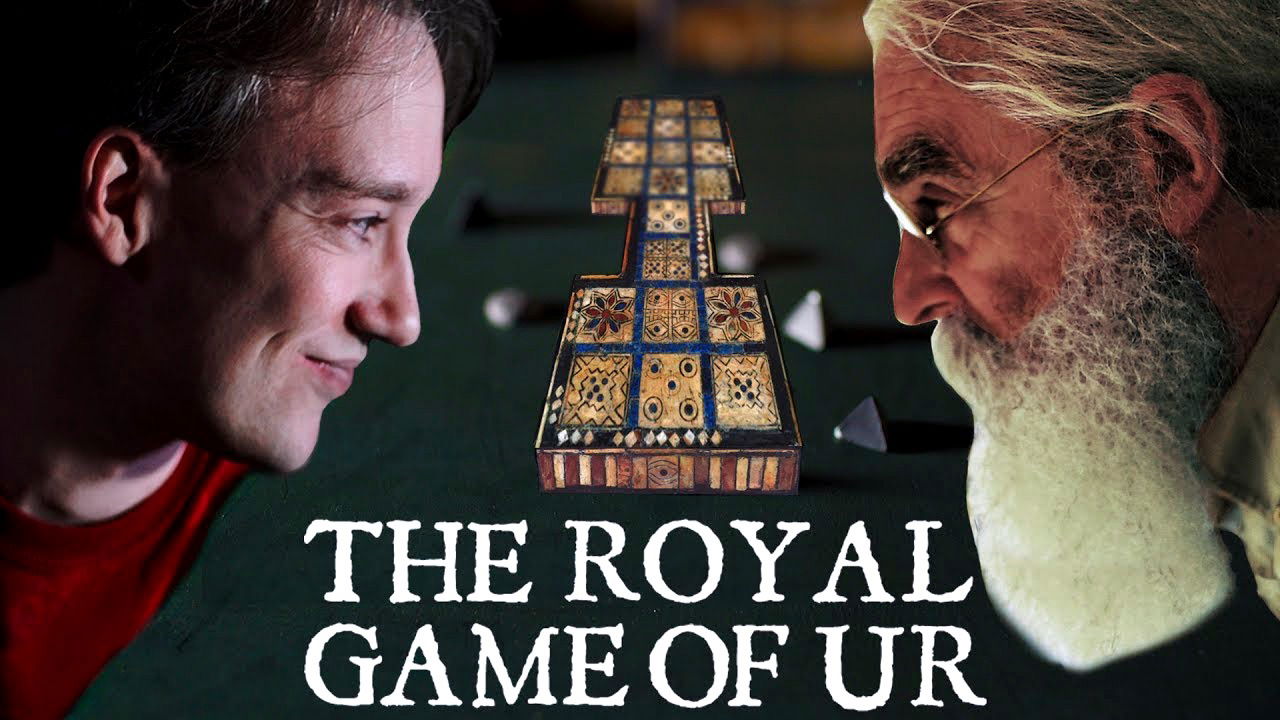

Three persuasive notions of the State inform our understanding of the modern State. One approach is that the State's purpose is to serve man. A second understanding of the State is that human being is a creature of the State. The third view fathoms the State as god and man oftentimes comes in conflict between serving the State or serving God. Along this third notion of the State, Hegel shares a blind and naive worship in the superiority of the State. He views the State as "the Divine idea as it exists on Earth." Hegel defends the idea that "the march of God in the world, that is what the State is". Unfortunately, the State does not equate to the move of God in the world. And the State is not the terminal station of History. God's move in history does not stop at the modern State. The modern State does not stop the move of History. Exit the naive cult of the modern State as the lab of Rationality and progress! Hegel's notion of history as a continuous flow of dialectical process amounts to simply weaving a web of flawed truths to hinder History as the move to the final manifestation of God's Kingdom in the world. Bertrand Russell, a champion of the Progressives, gives us the last blow on the Hegelian castle of lies. Conceding to the evil effects of the Hegelian interpretation of History in distorting truth, B. Russel admits that, "like other historical theories, it required, if it was to be made plausible, some distortion of facts and considerable ignorance."
Indeed, it is ignorance to read history as a dialectical process. In God's reading room, we read the information about the end of a thing before its beginning. The end explains the beginning. The Kingdom of God is the terminal point of History on earth. The coming God's Kingdom explains why things are happening the way they have been orchestrated. The rise and fall of empires, the dynamics of democracy and the State are simple forerunners whose purpose is to prepare, educate, teach, and usher us into the Kingdom of God on earth. The State and national institutions are pedagogical tools for the Kingdom. As elementary school learning apps, they have been designed to convey indispensable understanding prior to entering God's government. Thus, God has been busy orchestrating empires as a pretext to bringing about His Kingdom on earth. Imperial powers on the world stage are mere puppets tools God is using to advance His agenda. Let us have a simple look of how God is a kingmaker whose final curtain show will be all about the manifestation of His Kingdom on earth. Four world powers will engage in a fierce clash for control of the world. What are these powers and what is their task force or role as related to the Kingdom of God?
WORLD MAJOR EVENTS AS LEARNING APPS FOR GOD'S KINGDOM
World major events have been planned by God long time before their manifestation. In other words, God's Word or the Bible is prophecy written as history. When what God said is fulfilled, that's what we call history. Historical events as messengers and orchestrated crisis are bringing to pass God's Word.
From the beginning of time, God summons each generation to carry out a specific task force for the purpose of accomplishing a key objective that fits into his coming Kingdom grand strategy. There is nothing like a blind, unstoppable historical dialectics unfolding in world history. There is a divine master plan that must be implemented at the right time in history.
"But have you not heard? I decided this long ago. Long ago I planned it, and now I am making it happen. I planned for you to crush fortified cities into heaps of rubble. That is why their people have so little power and are so frightened and confused. They are as weak as grass, as easily trampled as tender green shoots." Isaiah 37: 26-27
Rightfully so, nations and leaders in time have their specific calling as part of their role in bringing about God's Kingdom on earth.
"Who has stirred up this king from the east, rightly calling him to God’s service? Who gives this man victory over many nations and permits him to trample their kings underfoot? With his sword, he reduces armies to dust. With his bow, he scatters them like chaff before the wind. He chases them away and goes on safely, though he is walking over unfamiliar ground. Who has done such deeds, summoning each new generation from the beginning of time? It is I, the Lord, the First and the Last. I alone am He”. Isaiah 41: 2
"In that day the Lord will whistle for the army of southern Egypt and for the army of Assyria. They will swarm around you like flies and bees. They will come in vast hordes and settle in the fertile areas and also in the desolate valleys, caves, and thorny places. In that day the Lord will hire a 'razor' from beyond the Euphrates River - the king of Assyria - and use it to shave off everything : your land, your crops, and your people." Isaiah 7: 18-20
FOUR BEASTS ARISING FROM THE SEA
Daniel saw a vision of : 4 winds stirring up the sea, 4 beasts, and a great storm.
A beast is a representation of a kingdom. Daniel 7:17 tells us that "The four great beasts are four kings that will rise from the earth".
Winds are symbolic of war, conflict, strife.
Water represents nations, peoples, multitudes (Revelation 17:15).
Daniel said:
“In my vision at night I looked, and there before me were the four winds of heaven churning up the great sea. Four great beasts, each different from the others, came up out of the sea.
The first was like a lion, and it had the wings of an eagle. I watched until its wings were torn off and it was lifted from the ground so that it stood on two feet like a human being, and the mind of a human was given to it.
And there before me was a second beast, which looked like a bear. It was raised up on one of its sides, and it had three ribs in its mouth between its teeth. It was told, ‘Get up and eat your fill of flesh!’
After that, I looked, and there before me was another beast, one that looked like a leopard. And on its back it had four wings like those of a bird.
This beast had four heads, and it was given authority to rule.
After that, in my vision at night I looked, and there before me was a fourth beast—terrifying and frightening and very powerful. It had large iron teeth; it crushed and devoured its victims and trampled underfoot whatever was left. It was different from all the former beasts, and it had ten horns.
While I was thinking about the horns, there before me was another horn, a little one, which came up among them; and three of the first horns were uprooted before it. This horn had eyes like the eyes of a human being and a mouth that spoke boastfully."
Daniel 7: 2-8
I) 911- 609 B.C. The Babylonian-ASSYRIAN Empire: THE FIRST WORLD EMPIRE
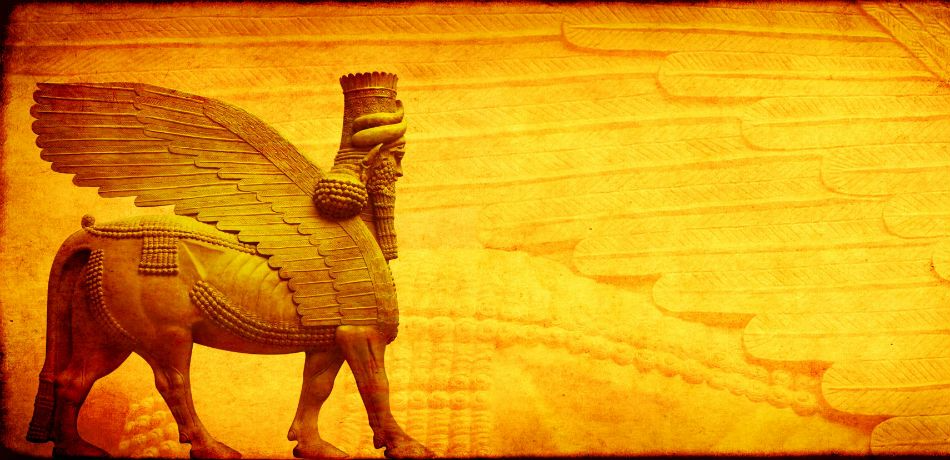
Job Description: A War Machine, Assyria is a Razor to shave off rising powers and the Rod to Express God's anger, Plunder and Knock down world nations opposing God's plans for the earth. Assyria is sketching the landmark for Bible Odyssey.
Symbol: Assyria/Babylon is the First World Empire and is represented by the image of a lion with eagle's wings. The lion speaks about kingship over the beasts. The symbol of the eagle refers to the attributes of chief over the birds.
" What sorry awaits Assyria, the rod of my anger. I use it as a club to express my anger. I am sending Assyria against a godless nation, against a people with whom I am angry. Assyria will plunder them, trampling them like dirt beneath its feet. But the king of Assyria will not understand that he is my tool; his mind does not work that way. His plan is simply to destroy, to cut down nation after nation. ...After the Lord has used the king of Assyria to accomplish his purposes on Mount Zion and in Jerusalem, he will turn against the king of Assyria and punish him - for he is proud and arrogant. " Isaiah 10: 5-12
"This is what the Lord of Heaven's Armies, the God of Israel, says: With my great strength and powerful arm I made the earth and all its people and every animal. I can give these things of mine to anyone I choose. Now I will give your countries to king Nebuchadnezzar of Babylon, who is my servant. I have put everything, even the wild animals under his control. All the nations will serve him, his son, and his grandson until his time is up. Then many nations and great kings will conquer and rule over Babylon. So you must submit to Babylon's king and serve him; put your neck under Babylon's yoke! I will punish any nation that refuses to be his slave, says the Lord." Jeremiah 27: 4-8
Assyria's historical trajectory is intimately linked with its southern neighbor, Babylonia. The name Assyria comes from the city of Assur, the sacred city and the religious center of the empire, named after the Assyrian national god Assur. The city of Assur was a trading center with a sophisticated banking system. The Assyrian empire lasted from the 25th century B.C. to 600 B.C. The official language of the empire was Aramaic, alongside Akkadian. Nineveh, Kalhu and Dur Sharrukin were the three great capital cities of the empire. Assyria is best remembered for its military technology and advanced weaponry systems, as well as their conquest. Assyria was a warrior society in a sense that every young man was a trained and fearsome soldier. Fighting was a lifestyle in the empire. The empire was led by warrior kings who led professional soldiers on the battle frontiers. The empire had the largest professional army in Mesopotamia. From 900 to 600 B.C., Assyria ruled the Middle East and exercised its dominion over many lands. It was the period of an Iron Age Mesopotamian empire. Surprisingly, Assyria's glory was met with a sudden demise. Babylon united with the Medes from the Iranian Plateau as well as with the Chaldeans of Babylonia in 612 BC and overthrew Assyria. Assyria's glory was brought to an end. The iron road of the Assyrian kings was broken over the region. In 606 BC, the city of Nineveh fell under the control of a joint coalition of Medes and Chaldeans under Nebuchadnezzar who established the Neo-Babylonian empire.
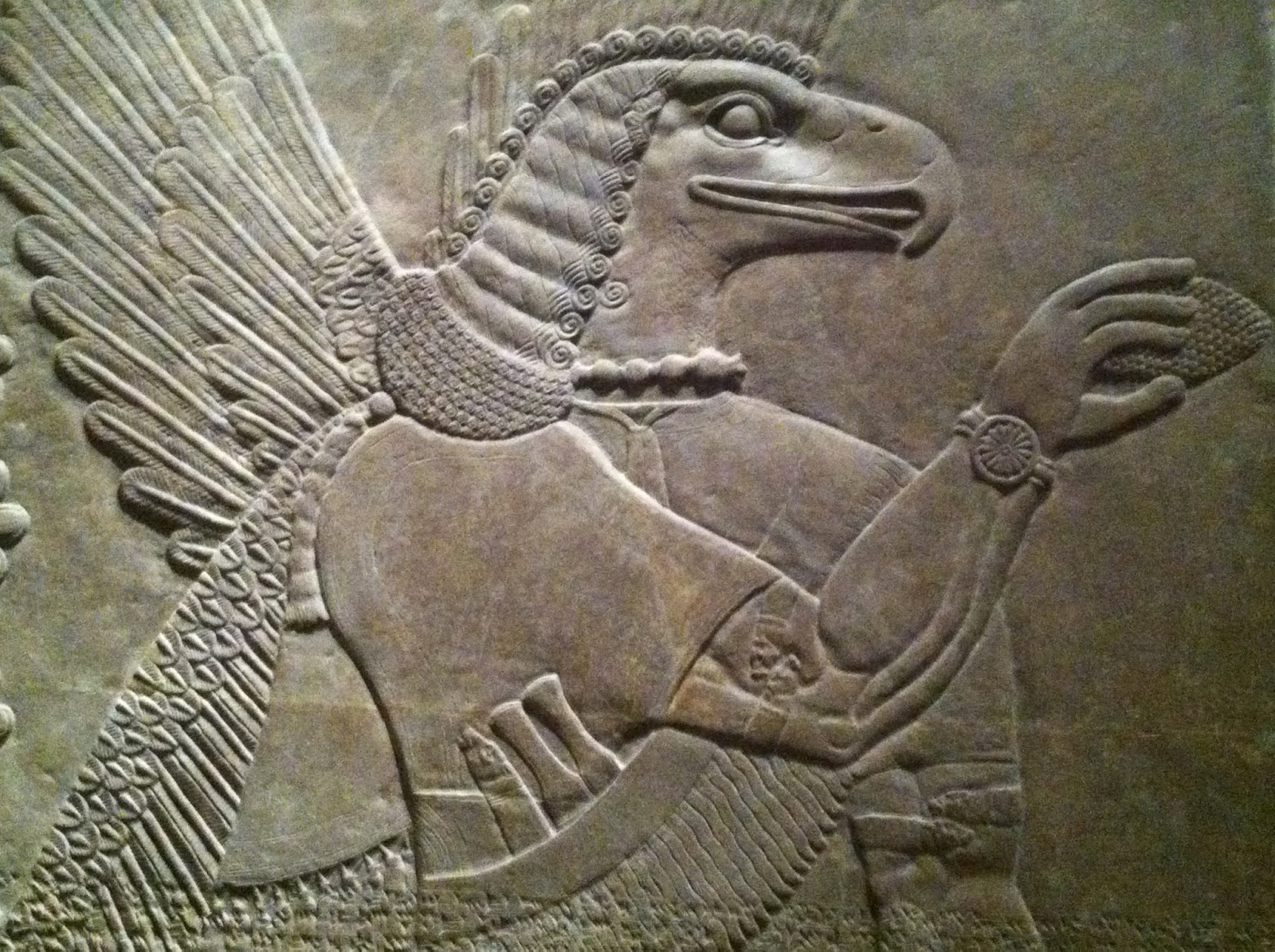
Marduk, high god of the Babylonians
What was Assyria's role as far as the Kingdom of God is concerned? Assyria spread its civilization across the Near East, laying the foundation for the Judeo-Christian traditions to develop. Literacy was highly esteemed in Assyria and the city of Nineveh had a library with more than 30.000 cuneiform tablets. The Neo-Assyrian empire marked the transition from cuneiform to the alphabet, and from chariots to cavalry as well. The Assyrians and the Jews shared over 3000 years of common history. Therefore, it is difficult to interpret the rich traditions of the Hebrew people without connecting the dots with Mesopotamia. Assyrian culture and civilization stand as an introductory roadmap leading to the Bible. As an Assyrian cultural heritage, the Epic of Gilgamesh, the Garden of Eden, the Deluge, etc... are simple Bible Odyssey reading materials.
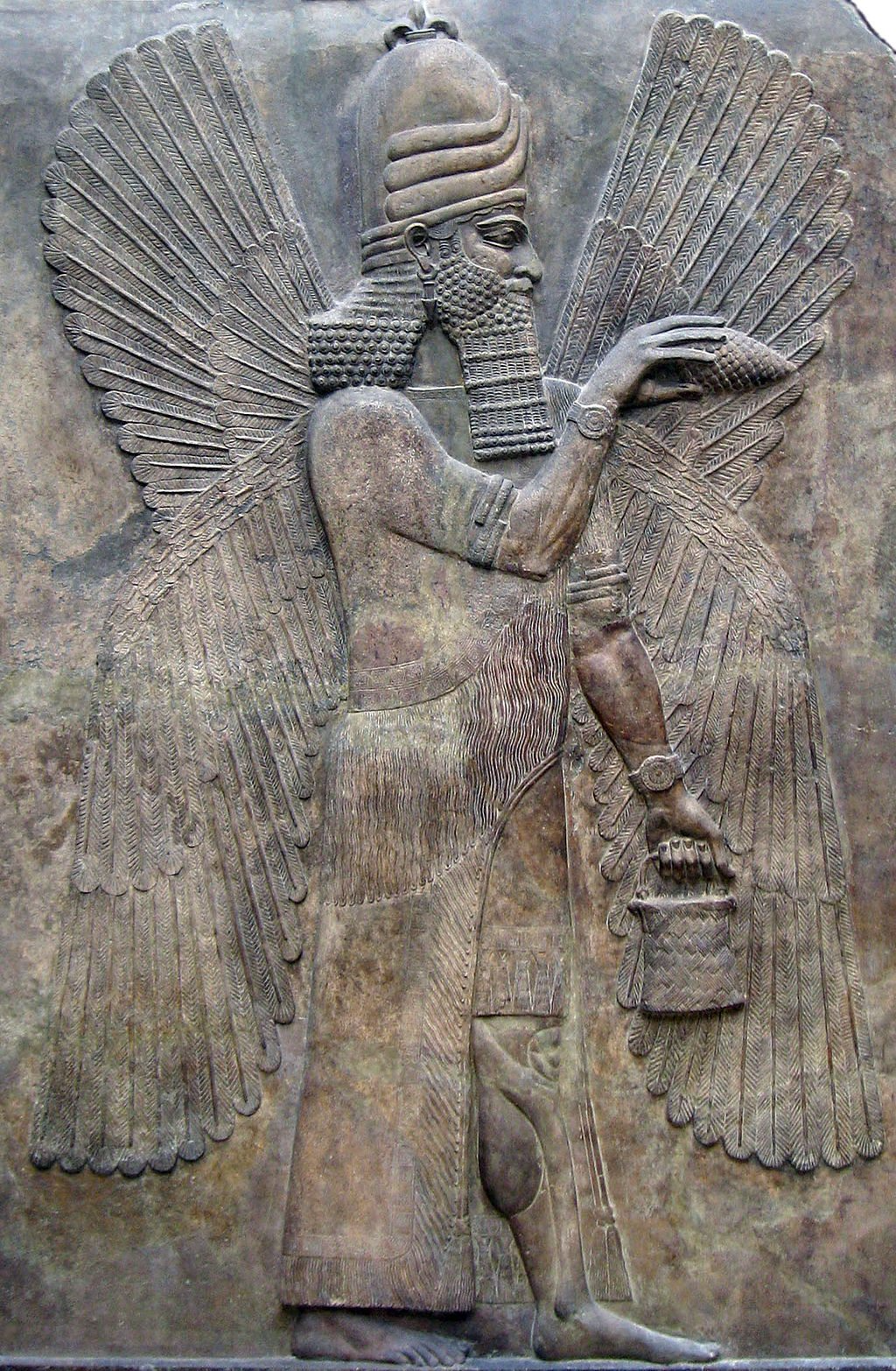
The seaport of the primitive city of Eridu, now Abu-Shahrein, had been identified as the garden of the Babylonian Eden or "plain" that was placed at the centre of the earth. Eden, is a "holy place" standing at the mouth of the Euphrates where sacred palm-trees were growing. These sacred palm-trees with roots of bright lapis lazuli marked the centre of the world and long tradition held these trees to be the tree of life. The historian Herodotus provided a description of the Babylonian landscape:
"Palm-trees grow in great numbers over the whole of the flat country, mostly of the kind which bears fruit, and this fruit supplies them with bread, wine, and honey. They are cultivated like the fig-tree in all respects among others in this. The natives tie the fruit of the male-palms, as they are called by the Greeks, to the branches of the date-bearing palm, to let the gall-fly enter the dates and ripen them, and to prevent the fruit from falling off."
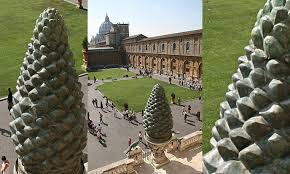
The fertilizing pine-cones became so conspicuous in the Assyrian culture to the point of defying common interpretation. The pine-cone was an attribute of the monarch's power, security and extended grace to his subjects. It was associated with symbol of productivity and fertility as well as representation of sacred emblem used in Assyrian religious rituals. In religious symbolism, it is related to the tree of the knowledge of good and evil. Beyond twisted symbolism and concealed interpretation, the pine cone simply makes reference to the symbol of the pineal gland. Pine cone served as a symbolic code to the pineal gland. The pineal gland is shaped like a pine-cone and is located at the center of the brain. It is connected to human's body perception of light. The pineal gland modulates our wake-sleep patterns and circadian rhythms. Thus, the pineal gland refers to human enlightenment, a symbol of immortality, eternal life, spiritual consciousness, and spiritual ascension. It is a network for spiritual vision and communication. The rise to political power was intimately linked with initiation to occultism in Assyria. In occultism, the pineal gland simply refers to the opening of the third eye to embark on the journey to the spiritual kingdom of darkness. The stage is set to map the battle field between light and darkness.
Who will control human mind? Darkness or light? The Assyrian kings received their power from their gods. They have to open up their spiritual portal to demonic entities to control their decision making. The symbol of power - the king's staff- perfectly speaks louder to the kinds of delegated spiritual powers that are leading behind the scene.
The staff of Osiris, way back from 1224 BC, depicts two serpents rising up to the seat of the pine-cone. Mission accomplished for Assyria ! Now God will use another imperial mantle to break down the Assyrian iron rod over the world.
II) 550- 330 B.C.: THE WORLD'S FIRST SUPERPOWER - THE MEDO- PERSIAN EMPIRE
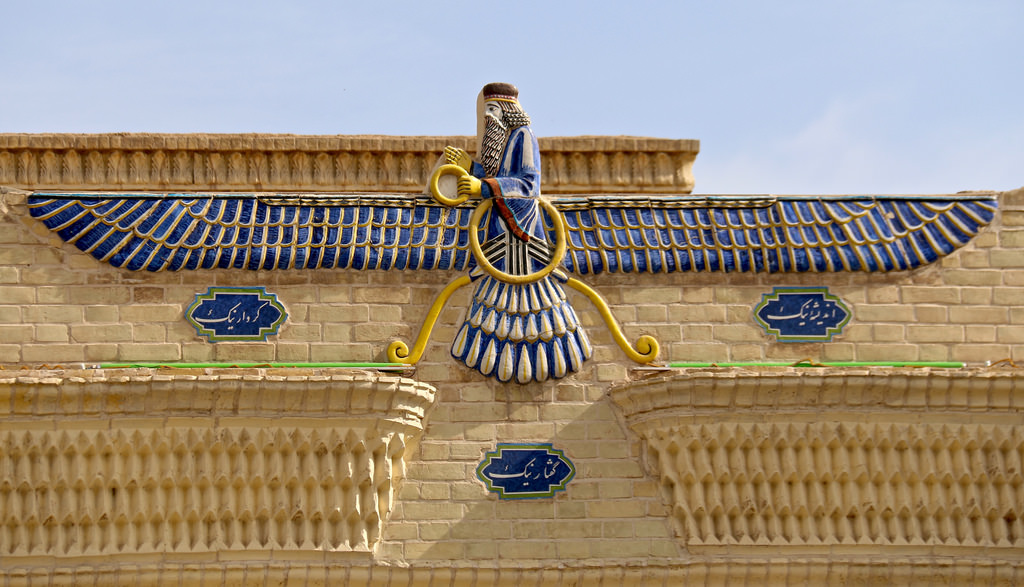
Job Description: Appointed to Destroy Babylon, to teach the practical approach to righteousness, and to vent out ideas about monotheism
"Sharpen the arrows! Lift up the shields ! For the Lord has inspired the kings of the Medes to march against Babylon and destroy her. This is his vengeance against those who desecrated His Temple" Jeremiah 51: 11
"The Lord has chosen Cyrus as his ally. He will use him to put an end to the empire of Babylon and to destroy the Babylonian armies. I have said it: I am calling Cyrus! I will send him on this errand and will help him succeed." Isaiah 48: 14
" For I am raising up an army of great nations from the north. They will join forces to attack Babylon, and she will be captured. ...You will become the least of nations - a wilderness, a dry and desolate land. Because of the Lord's anger, Babylon will become a deserted wasteland. All who pass by will be horrified and will gasp at the destruction they see there. Yes, prepare to attack Babylon, all you surrounding nations. Let your archers shoot at her; spare no arrows. For she has sinned against the Lord...Babylon, the mightiest hammer in all the earth, lies broken and shattered. Babylon is desolate among the nations! Listen, Babylon, for I have set a trap for you. You are caught, for you have fought against the Lord. The Lord has opened his armory and brought out weapons to vent his fury. The terror that falls upon the Babylonians will be the work of the Sovereign Lord of Heaven's Armies." Jeremiah 50: 8-25
The god Ahura Mazda - god of justice and order - taught by Zoroastrianism brought a clear divide between demons and the idea of monotheism
Symbol:
The symbol of the bear relates to the fierce Medo-Persian military. The Medes and Persians put an end to the Babylon power. The Medo-Persian empire had three ribs in its mouth. The ribs represent defeated powers, namely, Babylon, Lydia and Egypt.
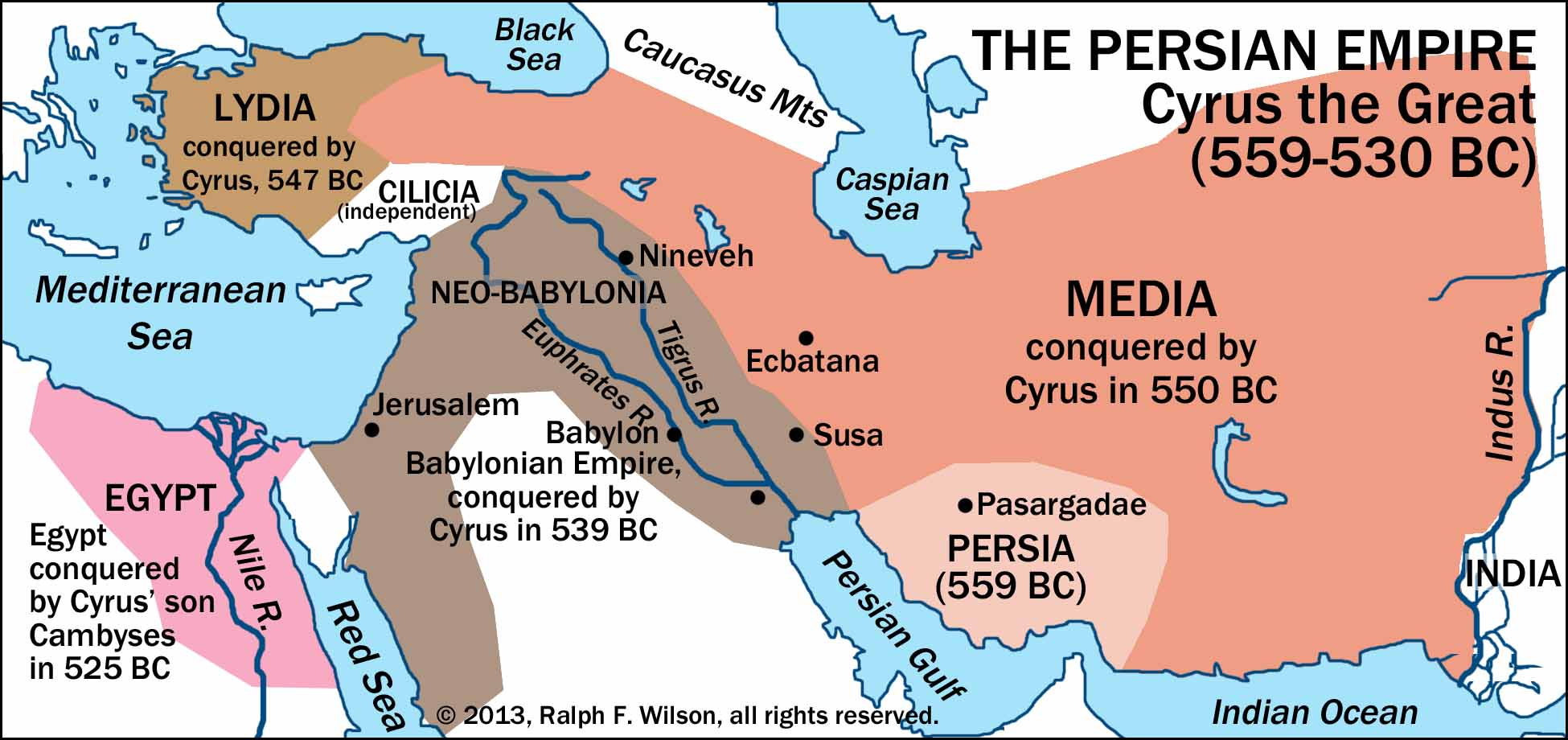
The Persian empire encompasses the successive dynasties that ruled around what is known as the modern-day Iran. Persepolis was the capital city of the empire. The empire spanned from the 6th century B.C. to the 20th century A.D. King Cyrus the Great, called also king of the "four corners of the world", founded the first Persian empire known as the Achaemenid empire around 550 B.C. The Achaemenid kings were practicing Zoroastrianism, a monotheistic religion. Herodotus called the Zoroastrian priests, Magi. King Cyrus the Great ruled by the Zoroastrian law of asha - the law of truth and righteousness. He successfully defeated and unified together under one government the kingdoms of Lydia, Babylon, and Media. Cyrus is the builder of the world's first superpower by governing together three important cradles of civilization: Egypt, India, and Mesopotamia. Aramaic was the official language of the empire. For approximately 200 years, the Persian empire connected the globe together, becoming a cultural, religious, scientific, and technological hub. It connected far and wide regions of the world, spreading from the present day Bulgaria, Romania, and Ukraine to India and Egypt. In other words, the Persian empire governed vast territories under its umbrella from the Middle East, to Central Asia, India, North Africa, Europe, and the Mediterranean world. In 330 B.C., Alexander the Great of Macedon put an end to the Achaemenid empire.
What is the Medo-Persian role in preparing the way for the Kingdom of God?
The Persian empire's legacy to the world is invaluable. It built a network of communication routes between Asia, Europe, and Africa. To spread the message of the Kingdom of God, we need a communication network. The empire developed the postal system, civil services, and introduced a model of a centralized bureaucracy to run government affairs. Cyrus the Great was the only non-Jewish figure to be anointed as messiah in the Bible because he gave emancipation to the Jews exiled in Babylonia and ordered the reconstruction of the Jerusalem Temple of God. Zoroastrianism played a role in paving the way to formulate the concepts of heaven, hell, and free will in Abrahamic religions.
III) 331- 168 B.C. THE GREECE EMPIRE: THE FIRST GLOBAL WORLD VIA CULTURE, ACADEMICS, AND OLYMPICS
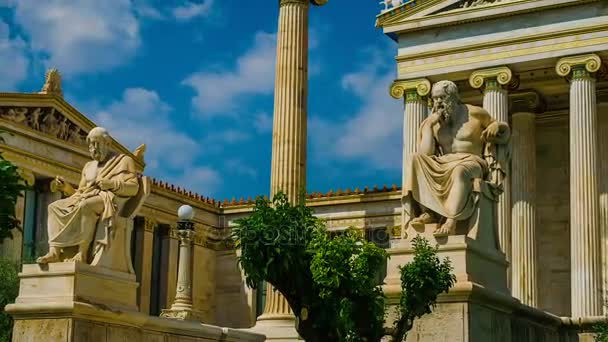
Symbol: Greece is represented with the image of a leopard with four heads and four wings. The leopard's four heads speak simply to the four generals who took control of the empire after Alexander. After Alexander's death, his four generals divided up the empire. Alexander's generals Ptolemy, Cassandra, Lysimachus, and Seleucus become the rulers of the Greece empire. General Ptolemy ruled over Egypt, turning the Egyptian army into an extremely powerful military might. Egypt battled continuously with the Roman power.
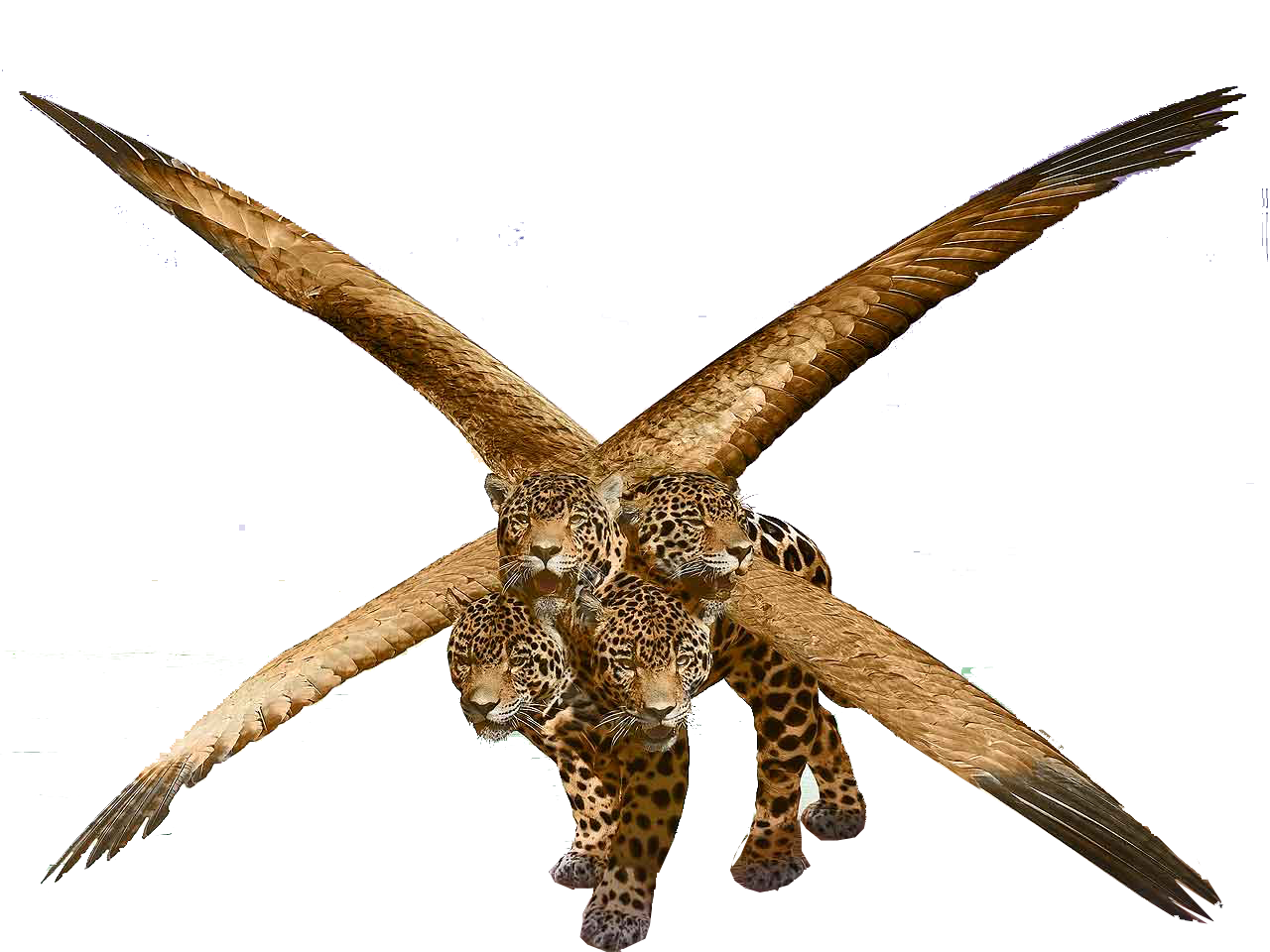
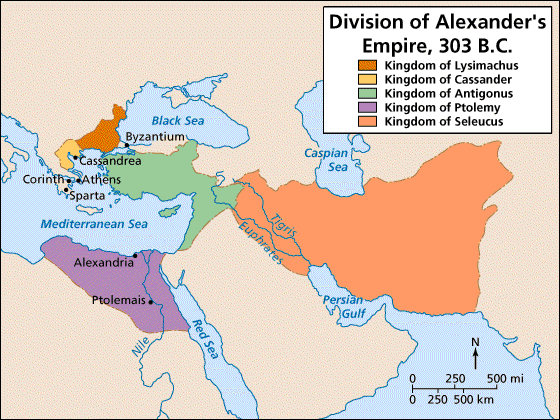
Job Description: Teaching Hellenism to the world to elevate human mind to the notion of global culture instead of local via unique academics curriculum, universal standards of order, law, and government, as well as the necessity of fast inter connectivity through communication networks
The 5th century brought to the stage two rivals city-states waging a devastating war against each other. Athens and Sparta engaged in the Peloponnesian War. Three major events signaled the downfall of the Persian empire in their attempt to conquer Greece. In 490 B.C.E., Greece was victorious at the Marathon. In 480 B.C.E., the Persian fleet was destroyed at Salamis. And in 479 B.C., the victory at Plataea. Eventually, Phillip II of Macedon conquered Greece, making a way for Alexander the Great to spread the Greek civilization across the world. The merging of Greek culture with the culture of the Middle East created a cultural hybrid called Hellenism. Hellenism influenced Western culture, Rome and christianism.
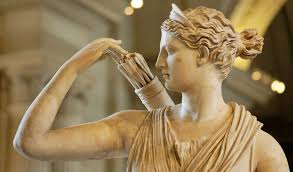
In 334 B.C., Alexander the Great crossed the Hellespont in present day Turkey to invade the Persian empire with 45.000 men. The symbolism of the leopard is a symbol of Alexander the Great's imperial dominion. The book of Daniel 11: 3 describes the Greek king who will defeat Medo-Persia as "a mighty king who will do whatever his will desires". The Greek empire is remembered for its swift military conquest. The Greeks conquered with the swiftness of a flying leopard with eagle's wings. Between 334 and 331, Alexander defeated the Persian armies in three big battles that took place at Granicus, Issus and Gaugamela. Alexander the Great conquered the world at 32 years of age and prematurely died when he was 33. Alexander’s military campaign lasted for 12 years and his empire stretched from Egypt to India. He built six Greek cities in his empire. Alexandria in Egypt is the most famous of the cities he built. Alexandria became the greatest hub of Greek culture and civilization.


What is the legacy of the Greeks to the world as related to God's coming Kingdom ? The Greeks invented the world's first democracy. The 5th and the 4th century marked the golden age of classical Greek culture, with the birth of democracy. Greece is a showcase of human talents in literature, architecture, music, philosophy and science, etc..
The united world by academics
Information about the Kingdom of God could now flow easily through literature, music, philosophy and science throughout the world. Hellenism was a channel to spread, discuss and do comparative study between the flow of information about the God of Israel and polytheism of the ancient civilization. Greece is the world lab of ideas and innovation.
IV) ROME: THE IRON TEETH IMPERIAL POWER - THE 2000 YEARS IMPERIAL MANTLE
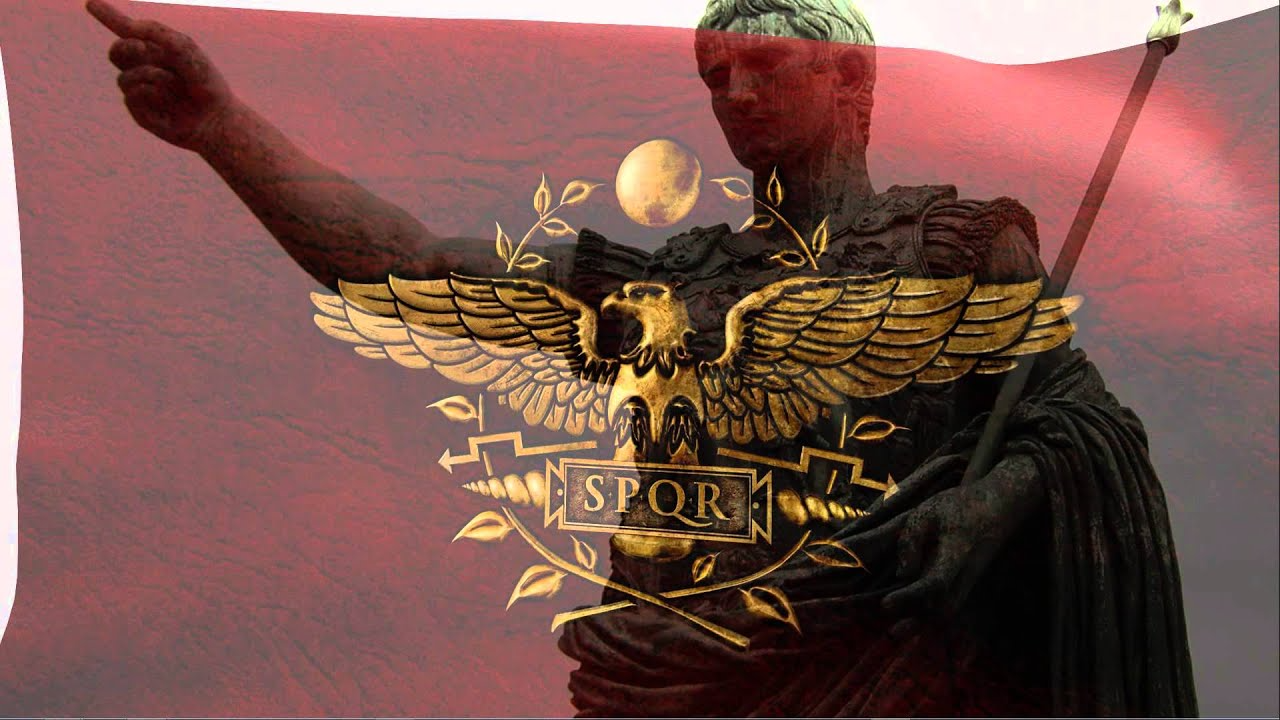
Symbol: Terrifying and powerful beast, with iron teeth and bronze claws.
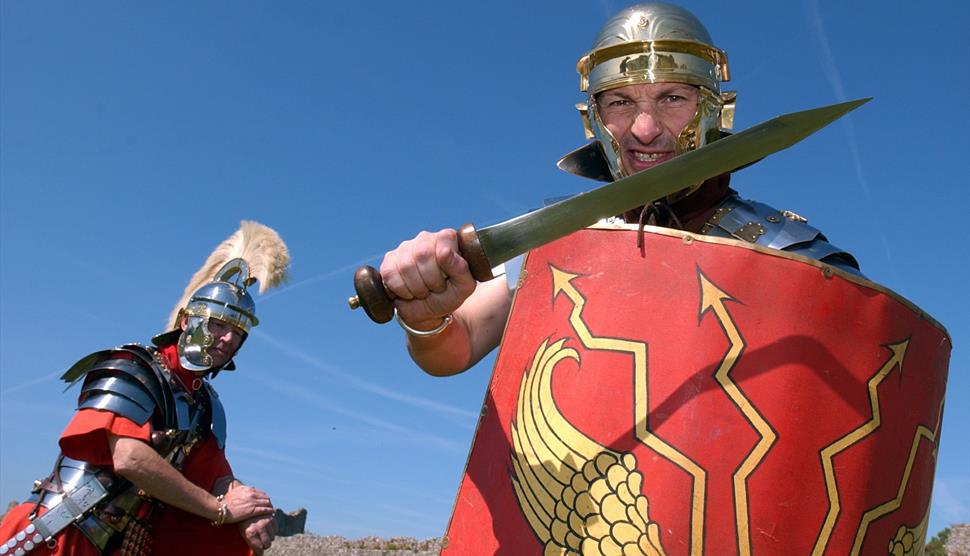

Roman Crucifixion
Job Description: launching ramp for christianity to become a world religion
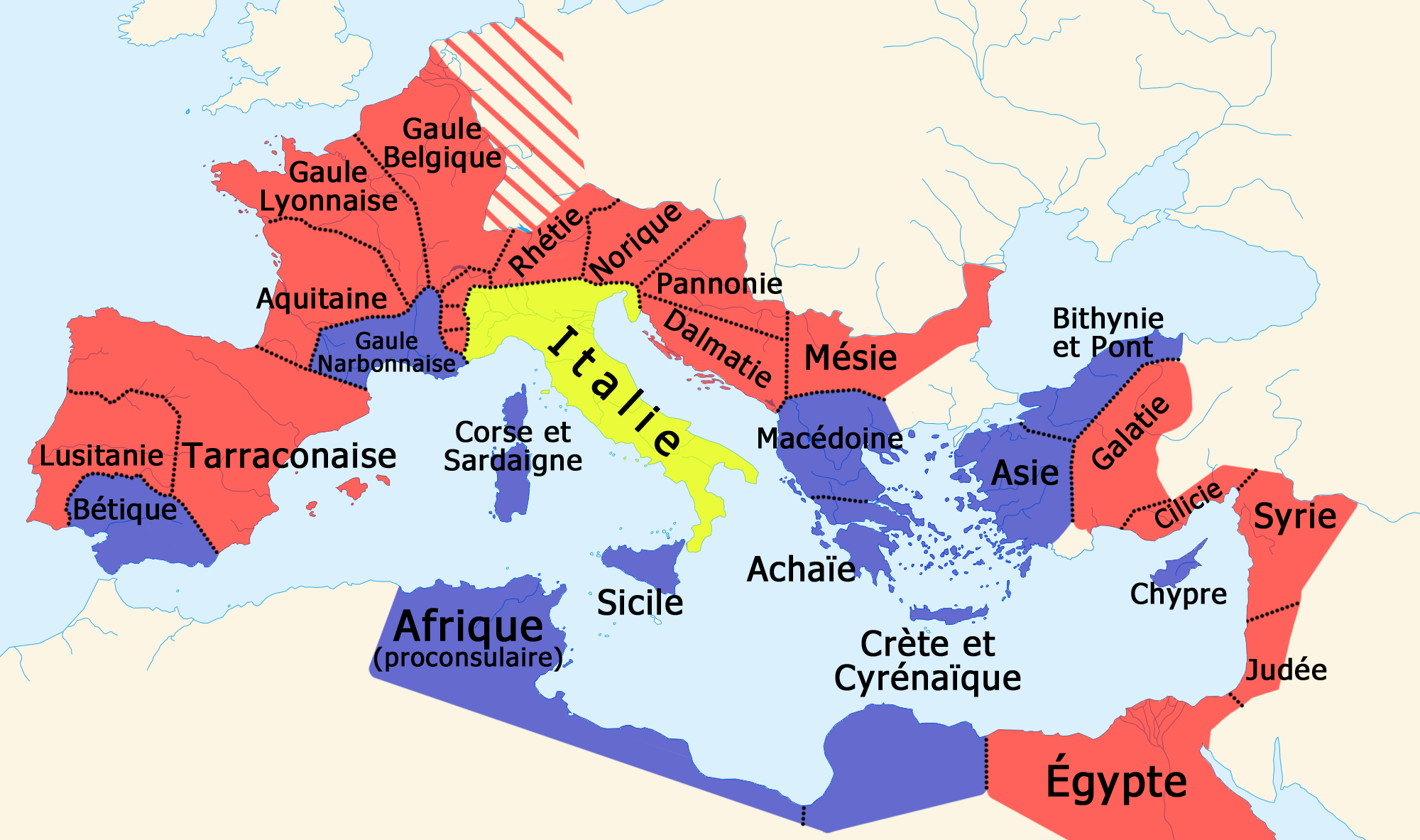
Roman Empire 14 A.D.
At the battle of Pynda in 168 B.C. during the Third Macedonian War, Rome crushed Macedon. Rome is depicted "as strong as iron" and ruled the world from 168 B.C. to 351 A.D. Rome is the most dreadful of all world beasts. Daniel 7:7 describes this fourth beast as "terrifying and frightening and very powerful" with "bronze claws". In Daniel 2, Rome is depicted as a beast with "large iron teeth". Rome devoured, annihilated, trampled underfoot, and crushed all rising powers. Indeed, Rome was the single most feared global power. The Roman beast has 10 toes at the end of its feet. Another picture of the Roman beast depicts it with 10 horns in Daniel 7. The 10 toes or horns represent ten divisions of Rome. Rome had never been conquered by another world power. Rome was brought to its knees through internal divisions and overtaken by barbarian tribes from the north. Rome crumbled from within from 351 to 476 A.D. The empire lasted 2.214 years and expired in 1453 C.E. with the fall the Eastern Roman empire - Byzantine.
Yet, after the fall of the Byzantine empire to this day, 10 attempted revival of the Roman empire will take place. What are the 10 successive Roman horns described in the book of Daniel ?
THE 10 IMPERIAL ROMAN HORNS

In the ancient time, people used animal horns to fight, protect themselves, and secure dominance. Horns are symbols of power, strength and victory. In Psalm 75: 10, the Lord gives us this warning : "I will cut off the horns of the wicked, but the horns of the righteous will be lifted up." Righteousness will always prevail over wickedness. In Jeremiah 48: 25, God clearly indicated that "Moab's horn is cut off." That means, Moab's power has ended. Luke 1: 69 makes mention of Zechariah praising the Lord because God "has raised up a horn of salvation for us in the house of his servant David." The horn of salvation here refers to Jesus Christ, the powerful king coming to deliver the world. The 10 horns arising out of the Roman Empire represent simply 10 kings or powers that will rise to take control or attempt to restore the Roman imperial territories.
In 476, Romulus Augustulus was deposed as the last Roman emperor. The Roman papacy rose to power by displacing and destroying three powerful tribal rulers that pretended to rule the empire. The papacy plucked up three powerful German tribes who fought to control the Roman empire: the Vandals, the Heruli or Herules, and the Ostrogoths. The Heruli and the Goths sacked Athens, Byzantium and Sparta. The Vandals are the rulers of the Germanic kingdom in the post Roman African territories. The Germanic Vandal ruled the Vandal Kingdom in North Africa and the Mediterranean from 435 AD to 534 AD. with Hippo Regius and Carthage as the capitals of their kingdom. They conquered Morocco, Algeria, Tunisia, and spreading up all the way to Mauritania and Tripoli. Since the successful overtaking of these powerful groups, the Roman papacy has made it its mandate to restore a European secular Roman power or a self-proclaimed successor to the Roman Empire throughout history.
3 Powerful Barbarian German Tribes Who Conquered Roman Territories
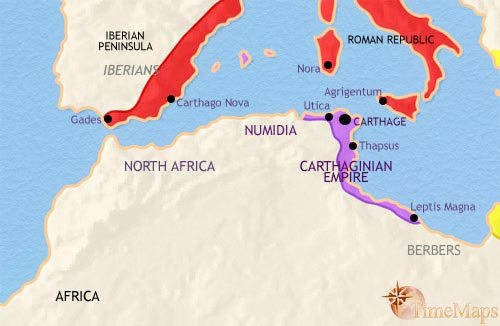
The Post Roman Germanic Kingdom in Africa
Map of Visigothic, Vandal, and Ostrogothic kingdoms
The Visigoths, the Ostrogoths, the Vandals, the Burgundians, the Lombards, and the Franks are the six major German tribes who contributed to the collapse of the Western Roman Empire. Of particular interest to us are the 3 barbarian powers who fought to become successors of the Roman emperors in the West: the Vandals, the Ostrogoths and the Heruli. The Vandals are the "barbarian" Germanic people who sacked Rome. They waged war against the Huns and the Goths, and took hold of a kingdom in North Africa that flourished until 534 A.D.
The Vandals, the Ostrogoths and the Heruli were the three powers that dreamed about controlling Rome's imperial mantle after the Caesars. They were uprooted at the behest of the "little horn". The little horn represents a religious-political power arising out of the Roman empire. Indeed, Rome's demise was followed by a church-state union to retain power and manage the empire. The medieval church of the Middle Ages from 538 to 1798 A.D. became a persecuting machine against God's people. The Middle Ages' saints experienced trials and Daniel 11: 33-34 tells us, "they shall fall by the sword and flame, by captivity and plundering." This little horn has human eyes and understanding, meaning its power is relying on human wisdom and not from God.
4) Justinian's Imperial Restoration under the management of Roman catholic bishops
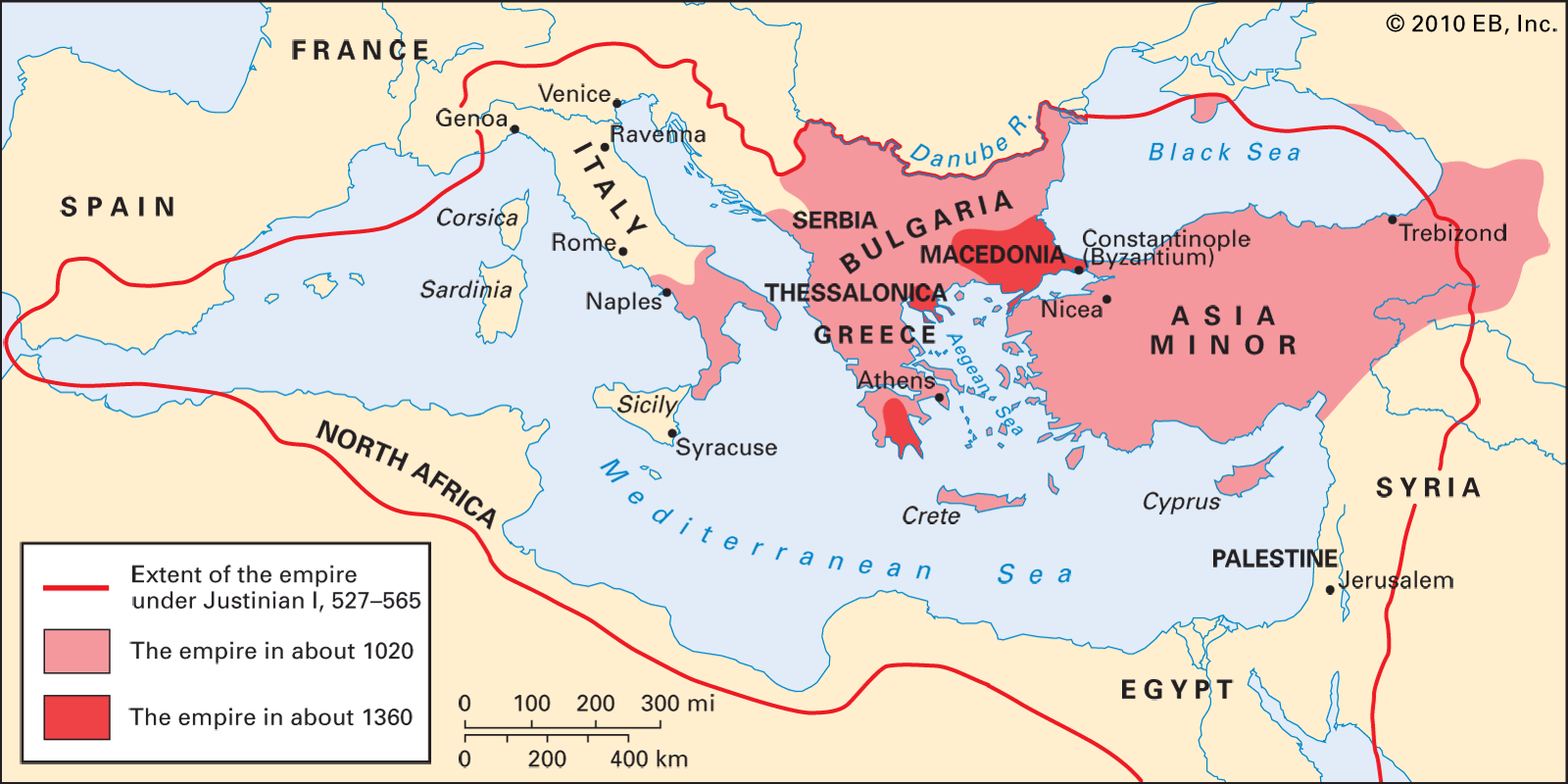
Byzantine empire under Justinian I
Emperor Justinian I ruled the Byzantine Empire from 527 to 565 with an ambitious policy of restoring the ancient Roman Empire. Justinian dreamed about building a new Rome in Constantinople as the seat of the imperial capital. Justinian recovered the territories of the Western Roman Empire. Belisarius, his general, conquered the Vandal Kingdom in North Africa. He incorporated North Africa, southern Spain, and southern Illyria, as well as Italy into the empire.
Byzantine emperor Justinian
5) Charlemagne's Carolingian Empire in the 9th century
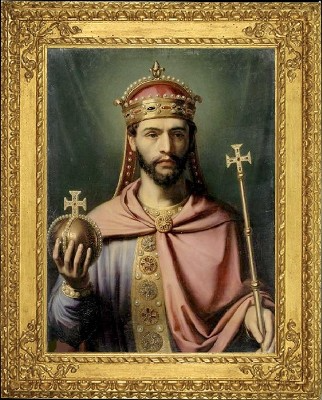
Charlemagne, Emperor of the West (768-814)
Map of the Carolingian Empire
In 800, Pope Leo III crowned Charlemagne, king of the Franks, Imperatur Romanorum - Emperor of the Romans - in Rome. For the first time under Charlemagne, the Germanic tribal powers, the Church, and the heritage of the Western Roman Empire were joined together. Indeed, for the first time in three centuries, the city of Rome had an empire. Charlemagne reunited Western Europe and spread christianity in his territories. Charlemagne conquered the Lombard kingdom in Italy, defeated the Saxons and waged war against the Muslims in Spain. He is the first great ruler after the fall of Rome.
6) King Otto the Great's Roman Empire of the German Nation
Otto II, King of Germany and Emperor of the Holy Roman Empire
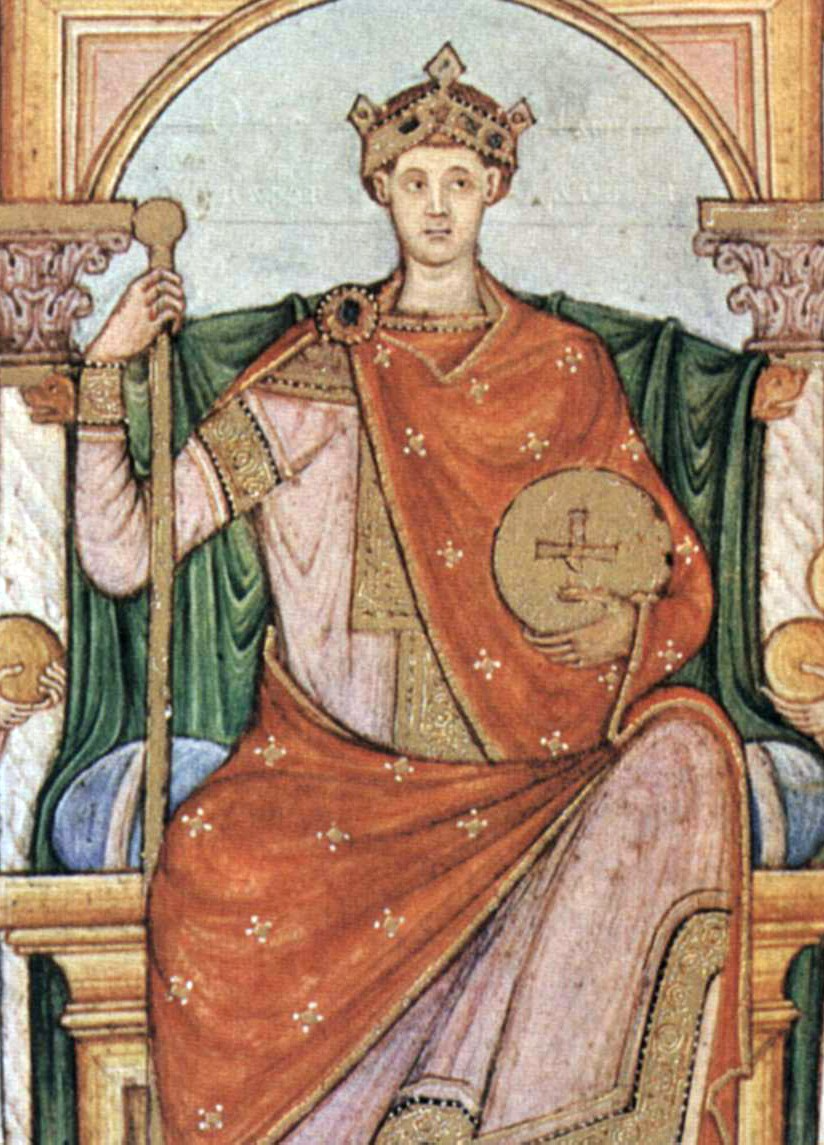
Map of the Holy Roman Empire founded by Otto the Great. This empire remained the strongest State in Europe until 1100. The empire stretched from Italy to Germany all the way to Denmark.

King Otto the Great conquered Rome in 961. In February 962, Pope John XII crowned Otto I emperor of the Romans. De facto, the papacy made Otto the Great by far, the most powerful European ruler during his time and the first of the Holy Roman emperors. Otto I became an ally with the Church, gaining support of the heads of monasteries and bishops as well. In 962, he invaded Italy on pope's behalf. The name Holy Roman Empire of the German Nation was preserved till 1806.
7) The Holy Roman Empire under the Habsburg Dynasty that lasted 300 years
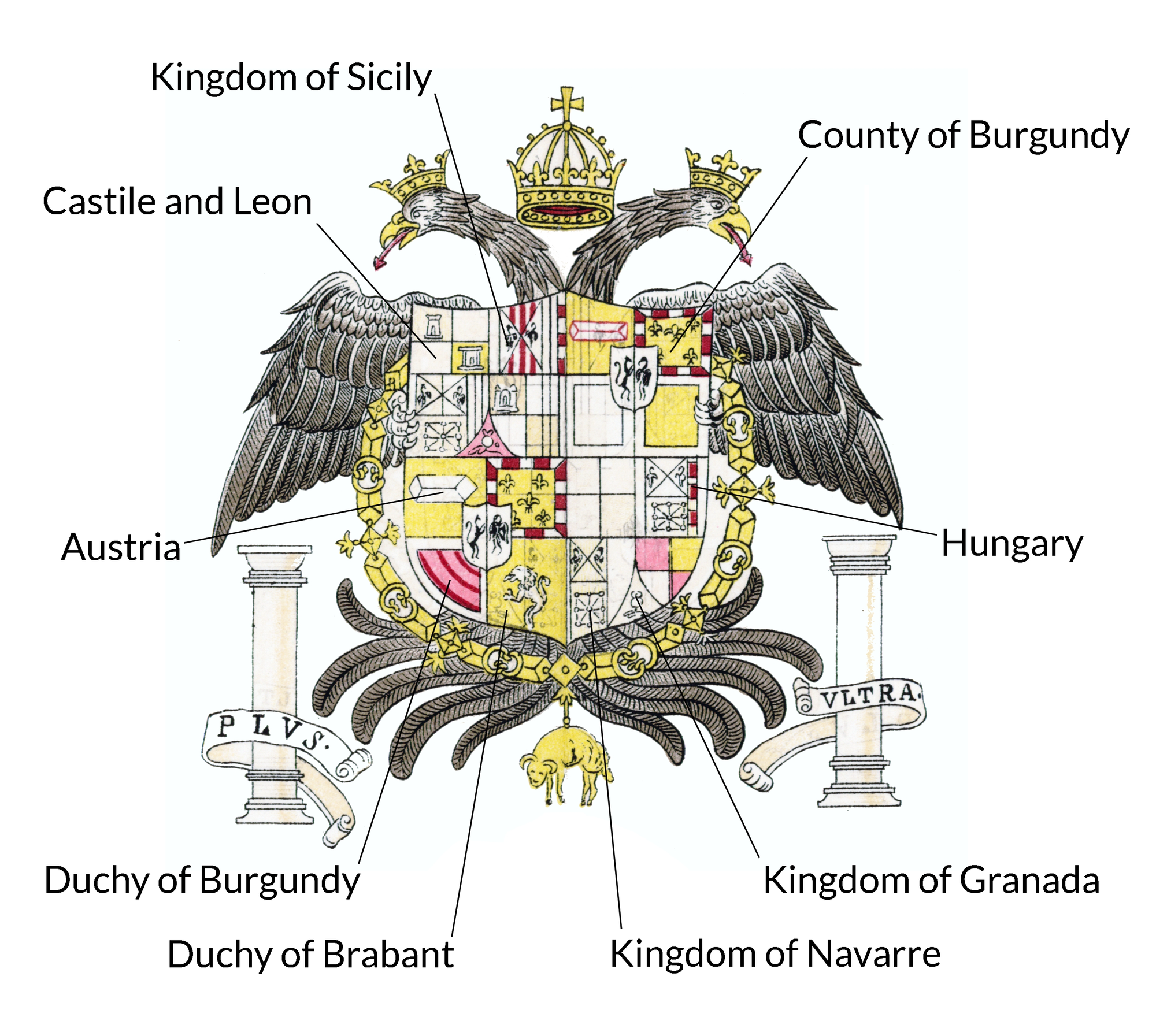
The Rise of the Hispanic Kingdom
The Habsburg global dominance from 1516 to 1700 ushered in the Spanish Golden Age on world stage. Spain was then ruled by kings, such as Philip II and Charles I from the House of Hapsburg. The Spanish empire - Imperium Hispanicum - is often referred to as The Catholic Monarchy. It was among one of the largest empires in history covering territories in Europe, Africa, and Oceania. From the 15th century to the early 19th century, Spain ruled the New World and the Indies. The Hapsburg rulers controlled territories in the Americas and the East Indies while bringing Christianity to the indigenous peoples of the New World and the Philippines.
The Hapsburg empire ruled over Spain, its Italian territories, its colonies, Spanish Netherlands that regroup States of the Holy Roman Empire such as Belgium and Luxembourg, northern France, southern Netherlands, and Western Germany with its capital Brussels. The Hapsburg empire also covers the Portuguese empire from 1580 to 1640, territories such as the enclaves of Ceuta and Oran, Alger, Tripoli in North Africa, and Hungary from 1526. The Hapsburg's rule ended in 1918.
Habsburg Dominion in 1700 - Charles II the last Spanish Habsburg ruler
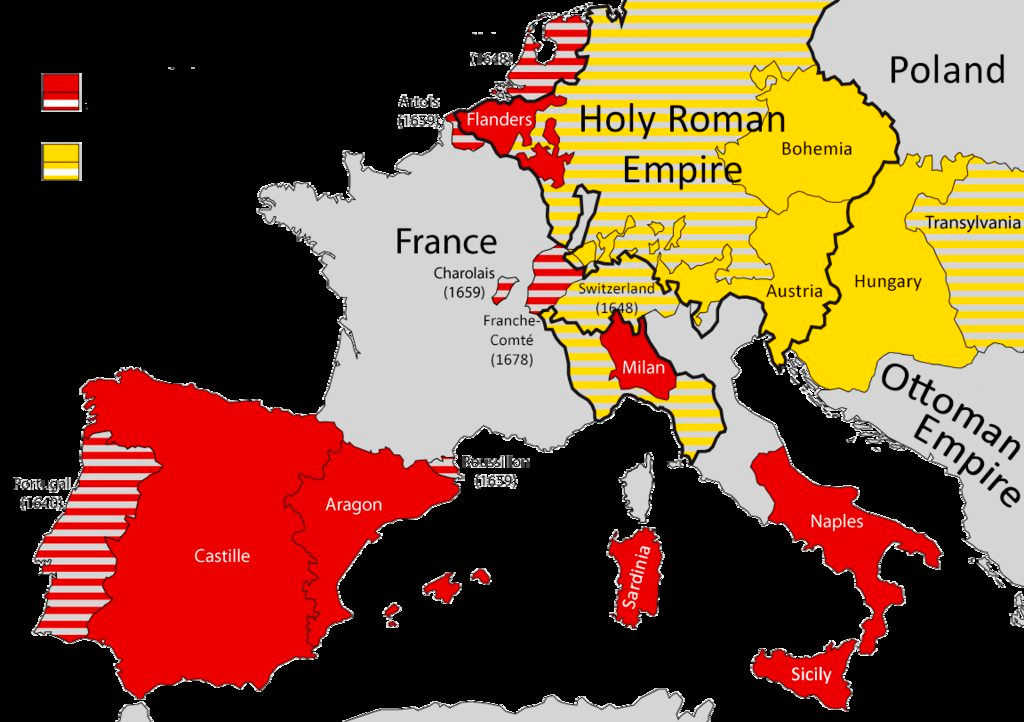
8) Napoleon's French Empire
The Rise and Fall of the French Empire

On July 27th, 1605, France embarked on a colonial imperial journey in North America with the founding of Port Royal, in Canada. In 1608, Quebec was founded as the capital of New France. In the 17th century, France established colonies in North America, the Caribbean and India. But we have to wait until the 19th century, to see the French empire under Napoleon Bonaparte became the dominant power in much of continental Europe. French influence covered Western Europe and Poland. In 1812, the French empire ruled over 70 million subjects, with military outposts in Spain, Italy, and Germany. After 1850, France rebuilt a new empire in Africa and Indochina and the South Pacific.
The coronation of Napoleon
9) The Hitler-Mussolini Axis Power of 1936: Resurrecting Charlemagne's Holy Roman Empire
The Axis powers - Rome-Berlin- ruled empires that covered large portions of Europe, North Africa, and the Asia-Pacific region. The Axis powers was defeated at the end of World War II.
Hitler's empire. How the Nazis ruled Europe and Africa.
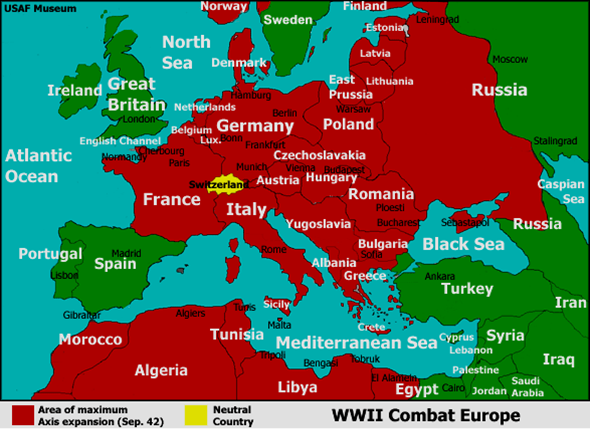
10) The European Union
The EU, under a democratic mantle, is the last attempted restoration of the nostalgic vanished imperial territories and power as well as an appetite to expand the Roman networks of imperial conquest and control under the guise of democratic institutions.
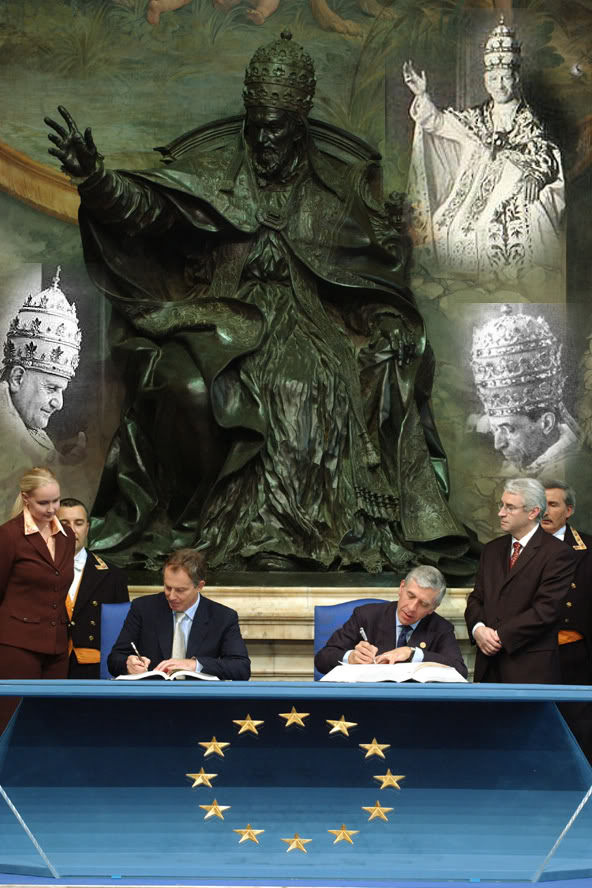
October 29, 2004 - Capitoline Hill - Signing the new EU constitution with Tony Blair
What role did Rome play as far as the Kingdom of God is concerned?
Rome refined the Hellenistic culture, passing down Greek architecture, philosophy and science to future generations. The Roman empire was the Law school for the world, teaching us the legal systems and inspiring the governance of modern democracies. Rome was a launching ramp for christianity to become a world religion.
World powers rise and fall. God's Kingdom is an everlasting Kingdom. Finally, "the saints of the Most High shall receive the Kingdom" Daniel 7:18
Narcisse Jean Alcide Nana
Comments
